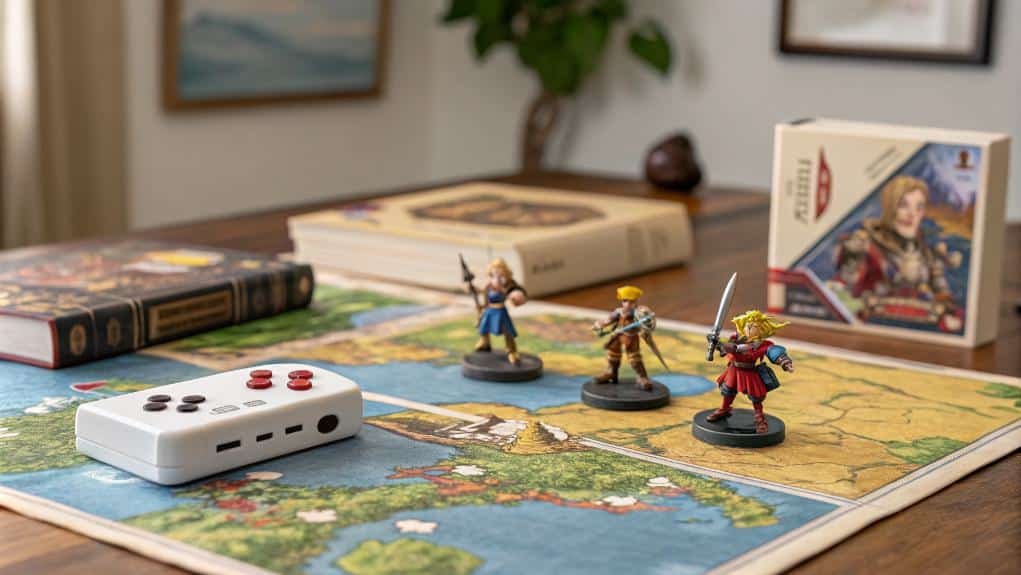Final Fantasy Tactics emerged in the mid-1990s under Hironobu Sakaguchi's initial concept, but it flourished through Yasumi Matsuno's innovative vision. Set in the conflict-ridden kingdom of Ivalice, it combines complex storytelling with intricate gameplay mechanics, appealing to both strategy and narrative enthusiasts. The game's themes of power, ambition, and social hierarchies mirror real-world issues, while its customizable job system enhances tactical depth. Its influence is profound, inspiring future titles and sparking community engagement. With its acclaimed music and enduring legacy, this iconic game invites exploration into its rich tapestry of characters and gameplay dynamics.
Key Takeaways
- Final Fantasy Tactics originated in 1993, evolving from Hironobu Sakaguchi's strategy game concept to Yasumi Matsuno's vision influenced by Tactics Ogre.
- The game is set in the war-torn kingdom of Ivalice, exploring themes of power, class conflict, and morality post-Fifty Years War.
- Innovative gameplay features include turn-based mechanics, a diverse job system, and strategic customization, despite challenges in balancing difficulty and AI behavior.
- Its narrative complexity, with multifaceted characters like Ramza and Delita, critiques societal hierarchies and ethical dilemmas, inviting player reflection on historical themes.
- Final Fantasy Tactics has significantly impacted tactical RPGs, inspiring future developments and maintaining cultural relevance through community engagement and remakes like "War of the Lions."
Development Background
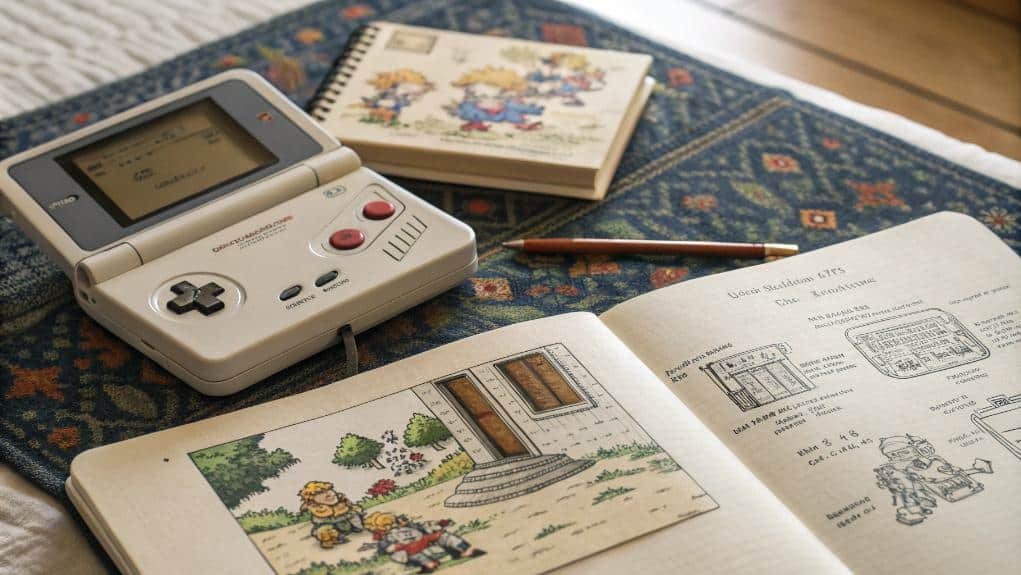
The development of Final Fantasy Tactics can be traced back to 1993, when Hironobu Sakaguchi first conceived the idea of a strategy game set within the beloved Final Fantasy universe. Initially, Sakaguchi created a brief design document, but his vision took a backseat as Yasumi Matsuno stepped in. Matsuno, known for his work on Tactics Ogre, brought a new direction that would shape the game's design evolution.
Under Matsuno's leadership, the team faced various development challenges. The shift from Sakaguchi's initial concept to Matsuno's vision required significant adjustments, especially in establishing the rich world of Ivalice. Matsuno's past experiences influenced the game's thematic depth, particularly its exploration of class and social status. The game's setting in Ivalice, which was created specifically for Tactics, added a unique layer to the narrative and gameplay.
This thematic richness, combined with the contributions of talented artists like Hiroshi Minagawa and Akihiko Yoshida, helped define the game's aesthetic.
Despite limited oversight from Sakaguchi, his enthusiasm for strategy games helped garner support during the project. The collaboration of the team, fueled by Matsuno's leadership, ultimately guaranteed that Final Fantasy Tactics emerged as a groundbreaking title that resonated with players and set a precedent for future strategy games within the franchise.
Gameplay Features
Final Fantasy Tactics captivates players with its intricate gameplay features that blend strategic depth and character customization within a compelling narrative framework. The game's turn-based battle mechanics operate on three-dimensional, isometric fields, utilizing grid movement for tactical positioning. Charge time (CT) determines when units can act, adding another layer to strategic planning.
Players can enjoy these key elements:
- Job System: With twenty unique classes, players can customize their characters' abilities and skills, revealing new jobs through mastery.
- Enemy Visibility: Knowing enemy hit points, except for certain bosses, allows players to make informed tactical decisions.
- Altitude Effects: Terrain impacts combat dynamics, rewarding players who position their units on higher ground. Additionally, the job class system introduces extensive customization options, allowing players to explore various character builds.
Experience points (EXP) and job points (JP) encourage skill learning and character growth, while monster recruitment adds variety, letting players capture creatures with unique skills.
The complexity of the game, alongside resource management and character death penalties, guarantees each battle requires thoughtful planning.
Ultimately, Final Fantasy Tactics offers a rich, multifaceted gameplay experience that challenges players to think strategically at every turn.
Story and Setting
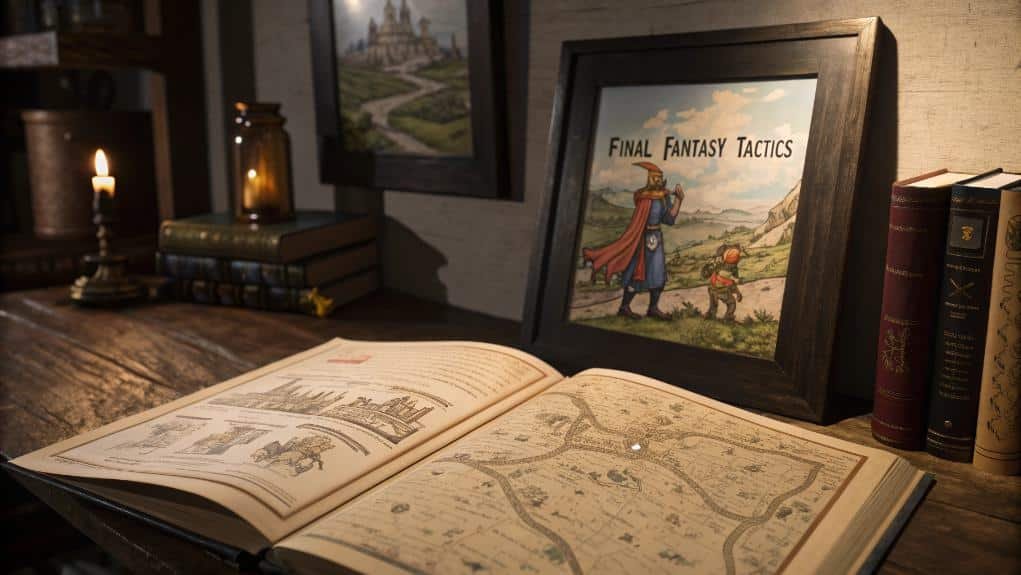
In the kingdom of Ivalice, the backdrop of political struggle unfolds against the remnants of a devastating war, shaping the motivations of its characters. The intricate web of power dynamics, marked by factions vying for control and the influence of corrupt institutions, invites players to question the very nature of authority and morality. As Ramza and Delita navigate this tumultuous landscape, their contrasting approaches to change reflect the broader themes of ambition, betrayal, and the consequences of historical narratives. This setting is further enriched by the economic troubles stemming from the Fifty Years War, which deeply affect the lives of its inhabitants and the unfolding narrative.
Kingdom of Ivalice
Ivalice stands as a rich tapestry of conflict, history, and intricate societal structures, shaped by its geographical isolation and diverse cultural influences. The kingdom, located on a peninsula, features seven provinces that were once individual kingdoms, showcasing a mix of cultures and economies. This unification has led to a complex social hierarchy dominated by nobility and influenced heavily by the Glabados Church.
Key aspects of Ivalice include:
- Ivalice Geography: Surrounded by sea and bordered by Ordalia and Romanda, its location has fostered both conflict and trade. The creation of Ivalice by Yasumi Matsuno adds depth to its geographical significance as a unique medieval-like world.
- Ivalice Economy: The aftermath of the Fifty Years War has strained the economy, creating challenges for its populace and nobility.
- Ivalice Technology: Remnants of advanced technology, such as airships and robots, hint at a forgotten era of prosperity and innovation.
With a society divided by class and deeply intertwined with religious influence, Ivalice's culture reflects its tumultuous past. The liberation of Espers and the effects of the Cataclysm further enrich this kingdom's narrative, making it a fascinating focal point in the world of Final Fantasy Tactics.
Political Struggle Themes
Political struggle serves as a driving force in Final Fantasy Tactics, intricately woven into the narrative and setting. Class conflict is evident from the start, with the Hokuten and Death Corps representing stark social hierarchies, showcasing how the nobility's treatment of lower classes fuels resentment.
Characters like Wiegraf Folles and Ramza embody the moral dilemmas inherent in these struggles, illustrating the complexities behind seemingly straightforward ideological divides. The game's focus on class warfare reinforces the significance of social status in shaping characters' motivations and actions.
As the story unfolds against the backdrop of a civil war, political manipulation and corruption themes become central. The state church of Ivalice orchestrates events to further its agenda, highlighting the power struggles that define this tumultuous era.
Ethical choices often force characters to confront their integrity, as they navigate a landscape rife with corruption and betrayal.
The narrative depth is enriched by the characters' motivations, as their actions reflect the broader societal tensions. The game critiques the dichotomy between nobility and peasantry, revealing nuanced perspectives that challenge stereotypes.
Ultimately, Final Fantasy Tactics masterfully explores the interplay of political intrigue and moral ambiguities, making its themes both relevant and compelling in the domain of storytelling.
Influence and Legacy
Although often overshadowed by mainstream titles, Final Fantasy Tactics has carved a significant niche in gaming history, influencing both its genre and the broader landscape of role-playing games. Its tactical innovations and complex narrative techniques set a benchmark for future tactical RPGs, prompting a genre evolution that many modern developers still aspire to replicate.
The game's lasting impact is evidenced by its continued relevance in gaming culture, particularly through:
- Community Impact: A dedicated fanbase generates theories and discussions, enriching the game's lore.
- Spin-Off Potential: The success of Ivalice has sparked interest in further explorations of its universe, including connections to Final Fantasy XII.
- Competitive Scene: The intricate battle mechanics foster a competitive environment that keeps players engaged, reflecting the game's isometric battlefields that challenge strategic thinking.
Final Fantasy Tactics excels in character arcs, addressing themes like class struggle and morality, which resonate deeply with players. Its design philosophy prioritizes strategic depth over mere nostalgia, encouraging both veterans and newcomers to appreciate its artistry.
Ultimately, the game's legacy remains a reflection of its enduring influence, shaping not just the tactical RPG genre but the very fabric of role-playing games as a whole.
Gameplay Criticisms
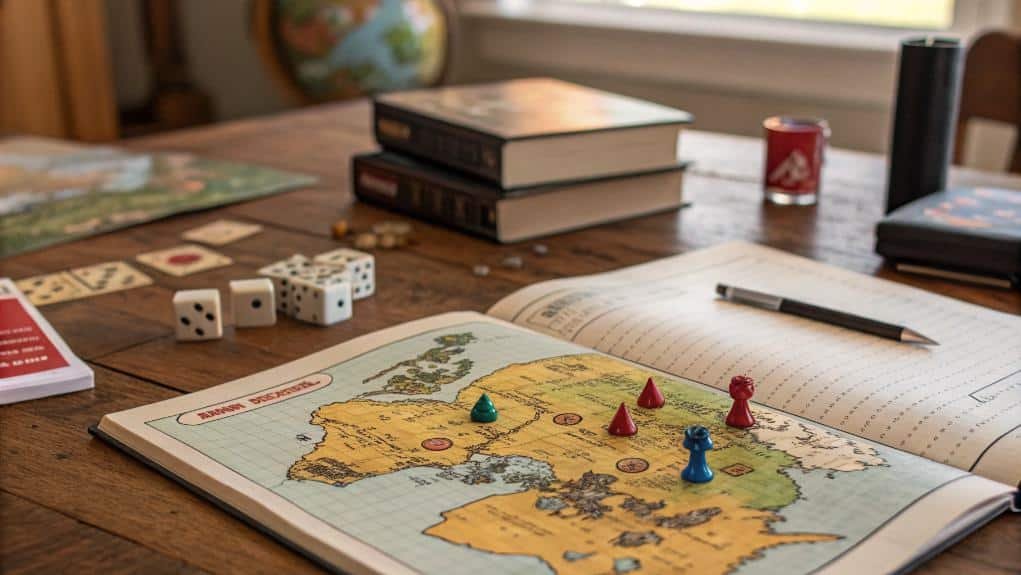
Despite its celebrated influence and enduring legacy, Final Fantasy Tactics faces notable gameplay criticisms that can detract from the overall experience. Players often encounter inconsistent difficulty balance, where some battles feel overly easy while others spike unexpectedly. This inconsistency is compounded by AI behavior, which frequently prioritizes equipment theft over strategic combat. Notably, the game's job system allows for diverse character roles, but it can also lead to frustration when some classes become overpowered.
The user interface also presents challenges; it's cluttered and requires maneuvering through multiple menus, making essential information hard to access. Camera controls can obstruct unit positioning, while terrain traversal can hinder strategic movement, especially in 3D environments.
| Criticism Type | Description |
|---|---|
| Difficulty Balance | Inconsistent battles; some are too easy or hard. |
| Grinding Issues | Extensive grinding needed, with some classes overpowered. |
| User Interface Issues | Cluttered UI and unintuitive controls hamper navigation. |
Additionally, players face strategic limitations due to a limited party size and reliance on grinding for job points. Encounter design can lead to frustrating softlocks, and lengthy battles contribute to overall game pacing issues. These factors collectively impact the enjoyment of this otherwise iconic title.
Cultural Significance
Final Fantasy Tactics stands as a landmark title in the domain of video games, not only for its innovative gameplay but also for its profound cultural significance. The game serves as a rich tapestry of cultural reflections, drawing inspiration from European history and the dark ages, while weaving complex narratives that challenge players' perceptions of faith and power.
Key aspects of this cultural significance include:
- Religious Critique: The narrative investigates the corruption of religious institutions, exploring how faith can be manipulated for power.
- Social Commentary: It addresses the dynamics of power and the cyclical nature of history, demonstrating how stories can be crafted to serve ulterior motives.
- Narrative Complexity: With its multi-faceted storytelling, the game allows for diverse interpretations, setting a standard for nuanced storytelling in the gaming industry. The themes of power and manipulation are intricately woven into the character arcs and plot developments, emphasizing the moral dilemmas faced by the protagonists.
Through its intricate plot and moral implications, Final Fantasy Tactics not only entertains but also invites players to ponder the depth of human experience, leaving a lasting impact on the landscape of video games and their cultural relevance.
Remakes and Spin-offs
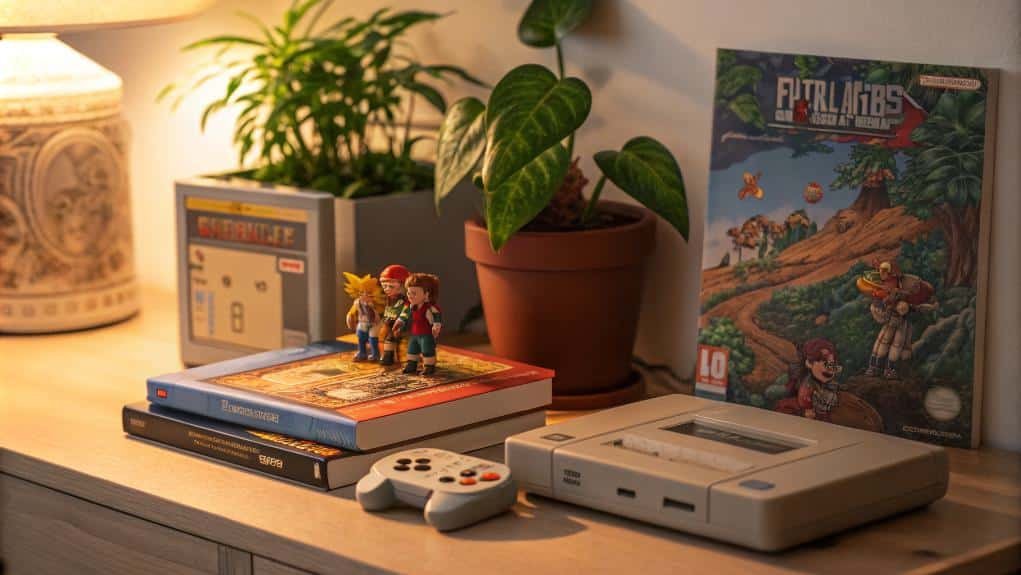
The remakes and spin-offs of Final Fantasy Tactics highlight the enduring appeal of its tactical gameplay and rich storytelling.
The PSP remake, War of the Lions, introduced significant enhancements, making it a preferred choice for both new players and veterans. The anticipation for a remaster has grown significantly among fans, especially with the recent trend of successful remakes by Square Enix.
Meanwhile, the Tactics Advance series expanded the franchise's universe, offering fresh narratives and mechanics while maintaining the strategic essence that fans cherish.
War of the Lions
Nostalgia drives the enduring popularity of *Final Fantasy Tactics: War of the Lions*, a remake that revitalized the original game for a new generation. Released in 2007 for the PlayStation Portable, it introduced enhancements that enriched the gameplay experience while retaining its core tactical mechanics.
Key features of the remake include:
- Enhanced Story Presentation: A historian narrates the events, offering a unique perspective on the War of the Lions, deepening players' understanding of character relationships.
- New Content: Players can recruit additional characters and explore new job classes, broadening strategic options and fostering diverse gameplay.
- Quality of Life Improvements: Better translations and animated cutscenes elevate the immersive experience, making the narrative more engaging.
The game's intricate plot, filled with political intrigue and power struggles, captures the complexities of the Ivalice setting. *Final Fantasy Tactics* has established genre standards for tactical gameplay, influencing many subsequent tactical RPGs.
Ramza Beoulve's journey through betrayal and conflict highlights the significance of character relationships in shaping the story.
*War of the Lions* not only honors its predecessor but also sets a benchmark in tactical RPGs, ensuring its legacy endures in the gaming community.
Tactics Advance Series*
Many fans of tactical RPGs see the *Tactics Advance* series as a natural evolution of the beloved *Final Fantasy Tactics* formula. Launched in 2003 on the Game Boy Advance, *Final Fantasy Tactics Advance* introduced players to the rich Ivalice universe with its unique characters and compelling narrative. It retained core tactics advance mechanics, allowing for strategic depth while expanding the job system, which has become a hallmark of the series.
In 2007, *Final Fantasy Tactics A2: Grimoire of the Rift* continued this tradition on the Nintendo DS, featuring Luso—a character borrowed from *Final Fantasy XII*. This installment further refined the tactics advance mechanics and deepened the lore, presenting players with new challenges and storylines.
Both games maintained the series' hallmark of intertwining strategy with engaging narratives, offering a distinct experience while remaining connected to the original's themes.
The *Tactics Advance* series not only broadened the tactical possibilities but also introduced memorable tactics advance characters that resonated with fans, solidifying its place as a respected spin-off within the *Final Fantasy* franchise. Its depth and replayability have left a lasting impact on the genre.
Historical Inspirations
Final Fantasy Tactics intricately weaves historical inspirations into its narrative, crafting a rich tapestry that reflects the complexities of medieval society. Set in Ivalice, a land reminiscent of medieval Europe and Persia, the game explores themes deeply rooted in historical accuracy and socio-political dynamics. The narrative perspective, largely shaped by the "Durai Papers," highlights how history is often subjective, manipulated by those in power.
Key historical inspirations include:
- Post-War Turmoil: The aftermath of the Fifty Years War sets the stage for economic depression and intense power struggles among heirs, mirroring real historical conflicts.
- Feudal Structures: Ivalice's society operates within a feudal framework, showcasing the political interplay between influential figures and the oppression of the populace.
- Social Commentary: Issues like racism, xenophobia, and religious dogma are explored, reflecting the darker aspects of human history and prompting players to reflect on the consequences of such ideologies.
Through these elements, Final Fantasy Tactics not only entertains but also invites players to engage critically with the historical themes that shape its world.
Character and Job System
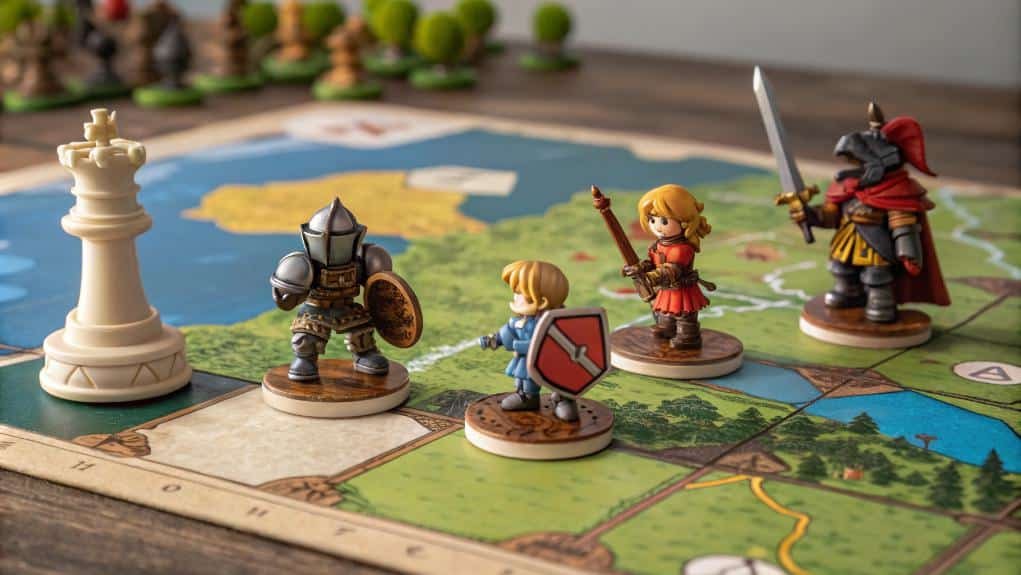
The character and job system in Final Fantasy Tactics showcases a rich tapestry of job customization mechanics, enabling players to tailor their characters to fit unique strategies.
This flexibility not only enhances character growth dynamics but also encourages players to experiment with strategic class combinations for peak effectiveness in battle.
Job Customization Mechanics
Job customization mechanics play an essential role in shaping the strategic landscape of games like Final Fantasy Tactics. These mechanics provide players with remarkable job flexibility, allowing characters to adopt various roles with unique abilities. The depth of customization fosters a rich environment for tactical experimentation, where players can mix and match skills for peak performance.
Key elements of job customization include:
- Skill Acquisition: Characters can learn and equip a diverse range of skills from different jobs, enhancing their utility on the battlefield.
- Class Diversity: The game showcases a variety of jobs, each with distinct mechanics that contribute to a more engaging gameplay experience.
- Balance Challenges: Developers must carefully manage the interactions between different classes to guarantee no single combination becomes overpowering.
Ultimately, the customization depth in Final Fantasy Tactics not only enriches gameplay but also invites players to navigate the complexities of job evolution strategically.
While the ability to create entirely new jobs is limited, the existing job editing tools provide ample opportunity for creative modifications, maintaining a fine balance between innovation and stability within the game's job system.
Character Growth Dynamics
In exploring the intricacies of character growth dynamics within the job system of Final Fantasy Tactics, players encounter a multifaceted approach to character development that intertwines statistical growth with strategic job selection. The game employs both "real" and in-game statistics, where job multipliers considerably affect character statistics.
For instance, a job with a high HP multiplier may yield fewer hit points than another job, showcasing how growth divisors play an essential role in character performance.
Certain jobs, like Mimes and Ninjas, exhibit superior stat growth rates, making them ideal for specific growth strategies. Skills directly influence these statistics; for example, abilities like Fundaments enhance physical attack power (PA), while Geomancy can bolster both PA and magic attack (MA). This dynamic creates opportunities for players to design unique classes that excel in their roles.
Min/maxing tactics further complicate character growth, as players often engage in class switching dynamics to optimize stat growth.
While a team of level 99 characters can generally overcome most challenges, the interplay of stat growth and job selection remains critical for long-term success in the game. Understanding these nuances allows players to build more effective, versatile characters in their tactical journeys.
Strategic Class Combinations
Numerous strategic class combinations in Final Fantasy Tactics allow players to craft characters that excel in a variety of combat roles. By understanding class synergy, players can create effective teams that showcase tactical versatility and maximize damage output.
Here are three notable combinations:
- Time Mage/Mystic: This combination leverages battlefield control and status effects, allowing players to manipulate time while inflicting debilitating conditions on foes.
- Summoner/Arithmetician: This duo offers powerful summons paired with area-of-effect magical attacks, enhancing strategic advantage in engagements.
- Geomancer/Chemist: Balancing elemental strategies with healing mechanics, this pairing provides versatility, ensuring characters can adapt to various combat scenarios.
Through these combinations, players can explore support roles or focus on offensive combinations. For instance, a Paladin/White Mage blend offers robust defensive capabilities alongside healing, while a Dark Knight/Samurai maximizes physical damage output.
Speed dynamics also play a significant role; the Ninja/Dancer combination allows rapid movements that can influence the tide of battle.
Music and Soundtrack
While many elements contribute to the enduring legacy of *Final Fantasy Tactics*, its music and soundtrack stand out as a pivotal force in shaping the game's emotional landscape. Lead composer Hitoshi Sakimoto and co-composer Masaharu Iwata crafted a cohesive collection of 71 tracks, utilizing orchestral arrangements that emphasize thematic development and innovative instrumentation. Each piece offers rich musical influences, reflecting the historical period and fantastical universe of the game.
Key tracks like the "Prologue Movie" and "Hero's Theme" showcase the contrasting emotional impact, ranging from intense climaxes to tranquil melodies. The use of bagpipes, harps, and brass creates a unique atmosphere, establishing a sound that resonates with players. Fans initially familiar with Uematsu's compositions may find this score different, yet many appreciate its depth and beauty.
The critical reception has been overwhelmingly positive, often highlighting its near-faultless composition, which earned a score of 9/10. This legacy impact has led to reprints by Square Enix, reaffirming the soundtrack's significance and setting a precedent for future orchestral scores within the Final Fantasy series.

